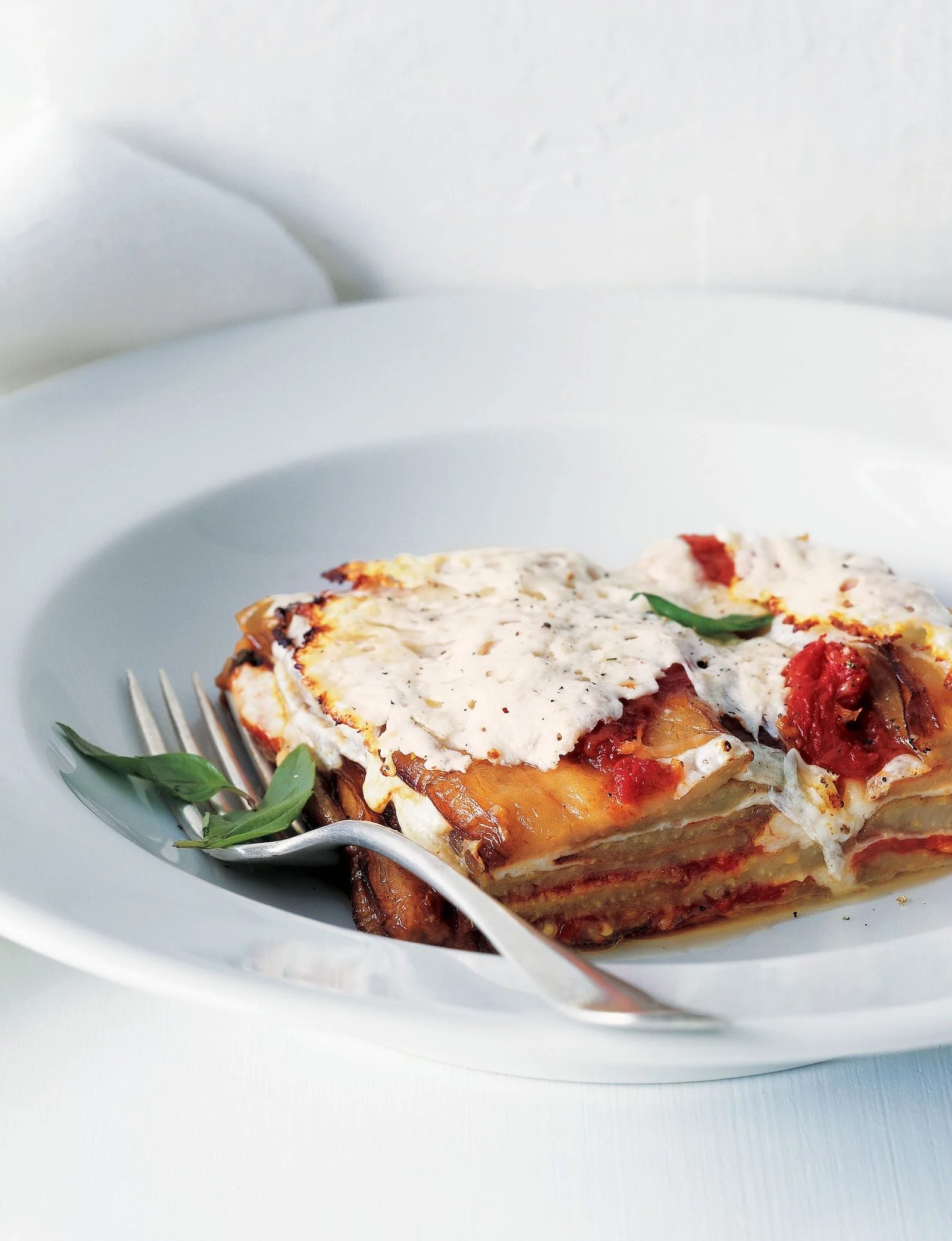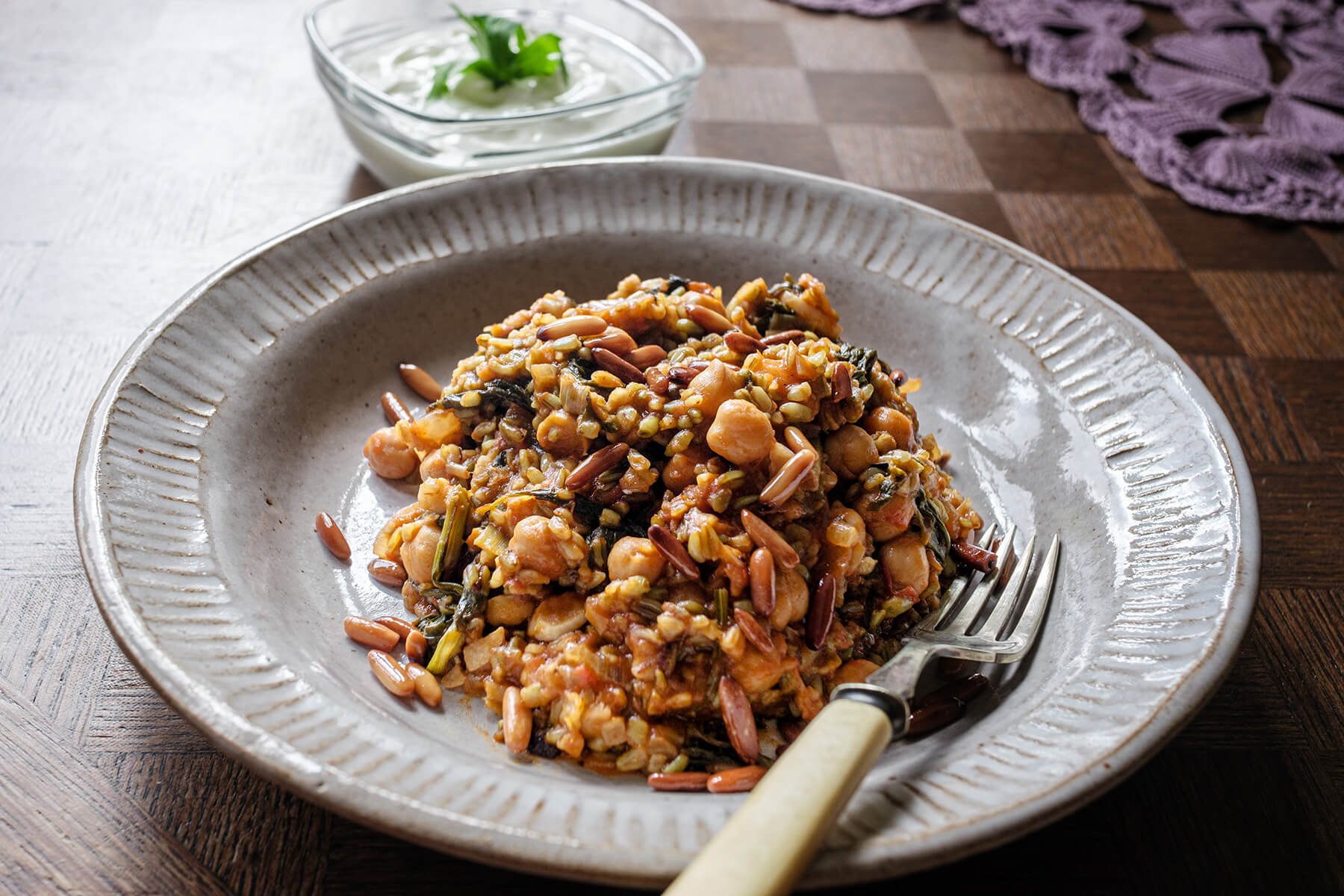Consuming passions: Aubergine/Eggplant
In the latest feature in our Consuming Passions series, food writer and supperclub host Kerstin Rodgers explains why the aubergine is much more than just a saucy emoji…
The French word 'aubergine' is the prettiest of all the names for Solanum melongena. As a punk teen, I dyed my hair with Crazy Colour in the 'aubergine' shade, to get a rich purple.
In America they call it, rather prosaically, an egg plant because the original plant, grown as an ornamental, had small white fruit that looked like eggs. In Italy it is called melanzane, from the Latin mela insana, mad apple, stemming from the medieval belief that consuming too many aubergines would drive you insane. The Italian side of my family refer to it in Neapolitan dialect as mulignan. In Spain and Portugal the purple fruit is berenjena/beringela — not too dissimilar to the Persian badenjan or Indian brinjal.
In modern parlance the eggplant emoji 🍆 is widely used to stand in for the male reproductive organ, something I discovered when I innocently sent out a newsletter using this emoji in the headline and got back some shocked reactions, spluttering and demanding to know why I was sexting them.
In common with other members of the nightshade family (such as tomatoes, chillies, peppers and potatoes), the alkaloid chemicals naturally present in aubergines can cause an allergic reaction for some people. This group of plants also includes the deadly nightshade, which produces the poison known as belladonna. I noticed that aubergine sometimes caused an allergic reaction in my baby daughter, but fortunately in adulthood she is fine and fried aubergines are now one of her favourite foods. Botanically, nightshade vegetables are fruits — in fact, technically, they are berries I've successfully grown aubergines on my own sun-trap patio without a greenhouse, but this can be quite hard to achieve in the UK.
I remember my dad cooking me fried aubergine for the first time when I was about ten years old. He dunked slices in seasoned egg, then flour, and then fried them. Instantly, I was a convert. Part of the thrill was no doubt that generally my dad never cooked. He was cooking these aubergines from a memory of his London Italian childhood and his Italian grandmother who we called Nanny Savino, who came to England from Minori at the age of 16.
To this day, I often make the simplest aubergine recipe, deep-fried, as a snack just for me. It's all about the texture: the outside purple skin crispy and friable, the inside spongy and soft having soaked up vast quantities of olive oil. Here is a Turkish version, served with yoghurt, created by Ghillie Basan in Classic Turkish Cooking.
Marlena Spieler, who died in 2023, offers a Jewish/Indian version of a very similar recipe in her book The Complete Guide to Traditional Jewish Cooking. Spieler claimed the recipe dates from before Christ, in 175 BCE.
As Elizabeth Schneider says in the entry on eggplant in her comprehensive reference work Vegetables from Amaranth to Zucchini, ‘Eggplant is one of the few Old World species of a family famous for its New World edible forms (along with one smokable form, tobacco): chillis and bell peppers, tomatoes, and potatoes.’ This is a brilliant book which I first discovered via ckbk – so good that I wanted to buy it in print too, but it is so sought after that second-hand copies change hands for a minimum of £35 on Amazon.
The classic Italian aubergine recipe is melanzane parmigiana, which takes several hours to make correctly. In my first cookbook Supper Club (not yet on ckbk, sadly) I describe making it for a supper club of 35 people. I spent all evening the night before labouring over a hot, oily stove to make enough aubergine slices for six large melanzane parmigiana. I ending up drinking an entire bottle of red wine by myself as sustenance for the gruelling frying session. The next day's hangover was awful.
Traditionally, for example in this version from Tessa Kiros, the dish is made with sliced aubergines first dunked in flour, then layered with tomato sauce, mozzarella and basil and topped with parmesan cheese. But for a lighter version, try Valentina Harris's melanzane parmigiana recipe in Italian Regional Cookery, which avoids the battering process.
In France aubergines are an essential ingredient in ratatouille, which is not an easy dish to get right. People have been put off aubergines for life after a dodgy ratatouille experience. The key is to avoid mushiness (and cheap tinned tomatoes). The Sicilian version of ratatouille, caponata, has a sweet and sour Middle Eastern vibe, with nuts and capers, plus the tartness of vinegar. When I make ratatouille, I add sherry-soaked sultanas and pine nuts.
Sicily, long colonised by Arabs, boasts its own aubergine sauce for pasta, Pasta alla Norma. Anna Del Conte's recipe appears in her Pasta Lover's Cookbook. Published in 1994, the book notes the difficulty of obtaining ricotta salata (dried, salted ricotta) which is one of the key ingredients. These days, fortunately, I can easily get this cheese at my local Kurdish cornershop in Kilburn High Road. The internet has also helped to make ingredient sourcing a (comparative) doddle.
All over the Middle East, the plum-hued skins of whole aubergines are charred and the interior flesh then scooped out and mashed to make baba ghanoush (which literally means 'spoiled father'). It's a wonderful dip which is ideally served alongside hummus with warm flatbread, and appears as one of a collection of dip recipes in my V is for Vegan cookbook. A spicier version of baba ganoush is mutabal, which includes tahini, as Luay Ghafari explains in Seed to Table. Some argue that true baba ghanoush should not include tahini, but having looked through the recipes on ckbk and elsewhere, it seems virtually every recipe has tahini, including mine! One rare exception is Mark Bittman's baba ghanoush which appears in his modestly-titled volume The Best Recipes In The World.
Aubergine is a flavour sponge, so it works well in curries. In Mrs Balbir Singh's Indian Cookery, first published in 1961, the author includes a simple aubergine and tomato curry. I also love an aubergine pickle to go with my Indian. This recipe for brinjal pickle comes from one of my favourite modern cookbook authors, the Australian/Sri Lankan chef Peter Kuruvita, and appears in his book Lands of the Curry Leaf.
The bitterness of the original plant has long since been bred out of modern day aubergine cultivars, so salting is no longer necessary. Elizabeth Schneider states that in her testing, salting did not improve the bitterness in any case – another reason to not bother. But bitterness can be a positive feature in the case of the small round green aubergines sometimes called pea eggplants or turkey berries which are used in Thai cookery. Here is a vegan Thai Green Curry recipe by Sasha Gill from her book Jackfruit and Blue Ginger. Like many bitter vegetables, aubergines contain polyphenols which can lower blood sugar and so may help to combat diabetes.
In Japan, where aubergines have been used since the 8th century, they bake and then grill the aubergine with a sweet miso glaze, turning the fruit into a silky and savoury starter known as nasu dengaku. This is a classic crowd-pleasing dish and ckbk has several recipes for it, including my own in V for Vegan.
Aubergines are my passion because they are adaptable, suited to any cuisine from Asian to European. Yes, they soak up an abundance of oil, but that only makes them more desirable. Cooked well, they possess all the addictive qualities of junk food, but nutritionally speaking they are full of fibre, potassium and antioxidants (like all dark-coloured vegetables).
When shopping for aubergines, choose those that are firm and shiny with no pitting on the skin and no mould around the calyx or stem.
Need more ideas? Here are 12 ways with aubergine/eggplant
More Consuming Passions
Amoul Oakes on the ancient grain that is an essential part of Lebanese cuisine
Citrus-specialist Bruce McMichael on a fruit that adds zest to so many dishes
Sam Bilton, author of Fool’s Gold, on the world’s most expensive and sought after spice









